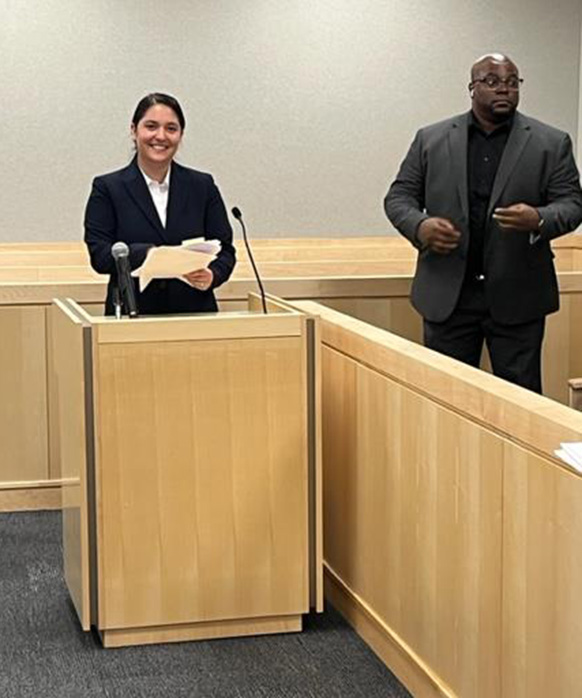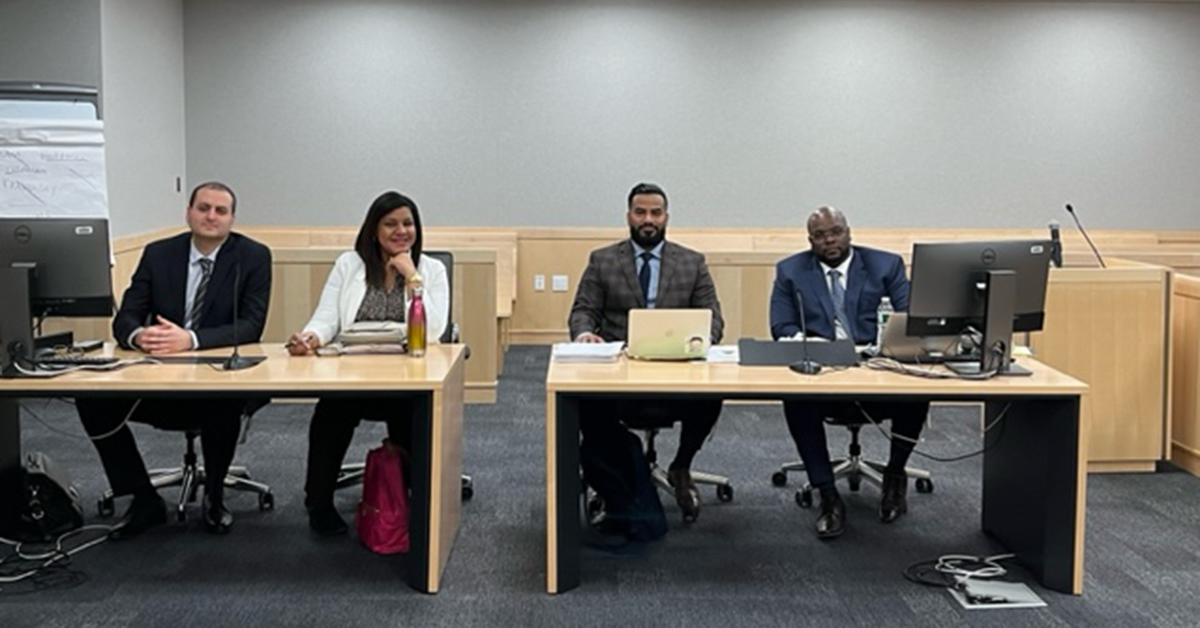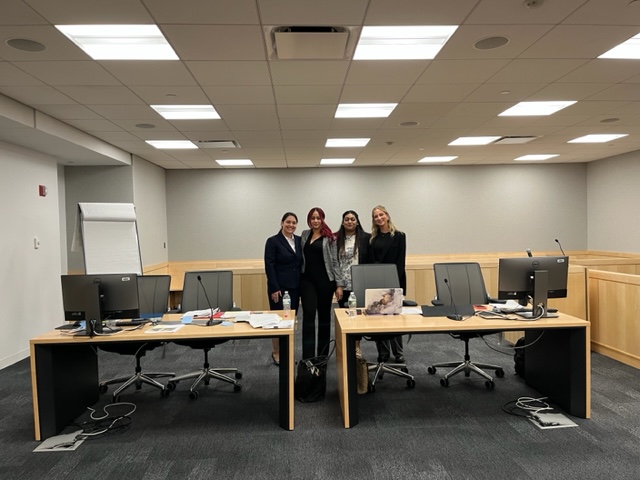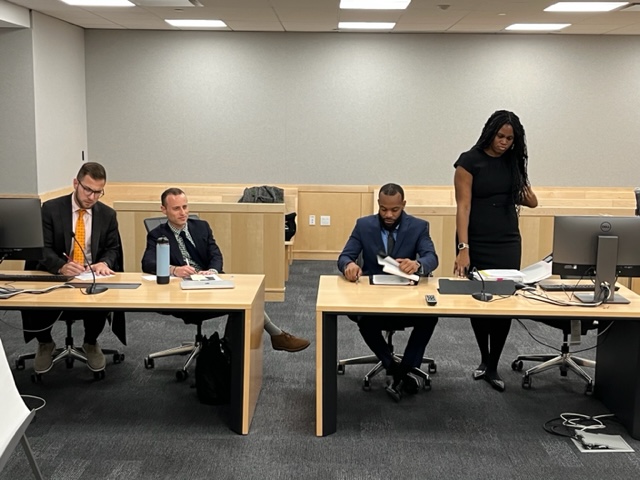“It was an honor to be one of the first students to try a case in the Law School’s new courtroom. We prepared for this trial extensively throughout the semester and it was our opportunity to practice trial advocacy firsthand. Advocating in the courtroom made me feel at home. I left the trial feeling encouraged and prepared for my career as a trial attorney.” – Tahmir Williams
“As a law student in a Criminal Trial class and a future trial attorney, my having the opportunity to hold our mock trial in a simulated courtroom environment was a worthwhile experience. Having this opportunity has allowed my classmates and I to truly perfect our litigation skills as we work our way towards being advocates for the people of Queens.” – Natalie Picon
 The case of the People v. Dax Batson was tried during the last week of classes in the new Mock Trial room. The students of Lawyering Seminar III presented their case to a jury of their peers and their judge (me, their professor) with skill and professionalism. Being in the courtroom made the class assignment feel all the more real as students handled objections, made opening and closing arguments, and grilled witnesses on the stand. Having the courtroom truly prepared the students for trial after graduation.
The case of the People v. Dax Batson was tried during the last week of classes in the new Mock Trial room. The students of Lawyering Seminar III presented their case to a jury of their peers and their judge (me, their professor) with skill and professionalism. Being in the courtroom made the class assignment feel all the more real as students handled objections, made opening and closing arguments, and grilled witnesses on the stand. Having the courtroom truly prepared the students for trial after graduation.
The trial teams took on the attempted murder case of People v. Dax Batson two prosecutors and two defense counsel at a time. Mr. Batson is charged with stabbing a man in the street, but the complaining witness’s girlfriend said the stabber was Mr. Batson’s wife. The prosecution teams worked hard to present Mr. Batson as a violent, explosive man out of control in the streets of the city. The defense portrayed Mr. Batson as a man with a past but who is now a loving and protective husband in recovery for his substance use disorder.

The first prosecution team chose to focus on the humanity of the complaining witness and the work he was doing as a former veteran with returning veterans who had no home. Carmon and Rosenberg showed the jury how losing this man would have a ripple effect on that community. The defense team of Posey and Williams walked the jury through the sloppy police work and how Mr. Batson protected his wife from an angry man, the complaining witness, coming toward them. They provided the jury with evidence Mr. Batson was not the stabber.
Our second prosecution team, Reyes and Brandon, went hard on Mr. Batson’s “story” and his past violent record. The defense team of De La Cruz Sosa and Scalise attacked the flaws in the prosecution’s case, highlighting a missing video of the incident the prosecution failed to preserve while demonstrating that Mr. Batson was trying to defend his wife from an attack by the complaining witness. They called the complaining witness’ wife to say she saw someone other than Mr. Batson stab her husband.

The third defense team of Picon and Rosario focused the jury on the irritation and aggressiveness of the complaining witness as he tried to push his way to the head of the line for service. That aggression placed Mr. Batson in fear for his life and that of his wife. Fahmida and Kulacz, representing the People, demonstrated how Mr. Batson’s defense was smoke and mirrors. They asked the jury to see through the trick and hold Mr. Batson accountable for a near-death stabbing.
The trial teams prepared hard and long and it showed. I saw some cross-examinations that were biting and direct cross-examinations that evoked sympathy. Their objections were solid and on point. I was impressed by their quick rephrasing of questions and ability to move forward with little disruption. The students’ openings and closings captured the attention of the jurors and myself as they wove the facts into narratives jurors visualized and felt in their gut. I am proud to say this class is ready for trial.

